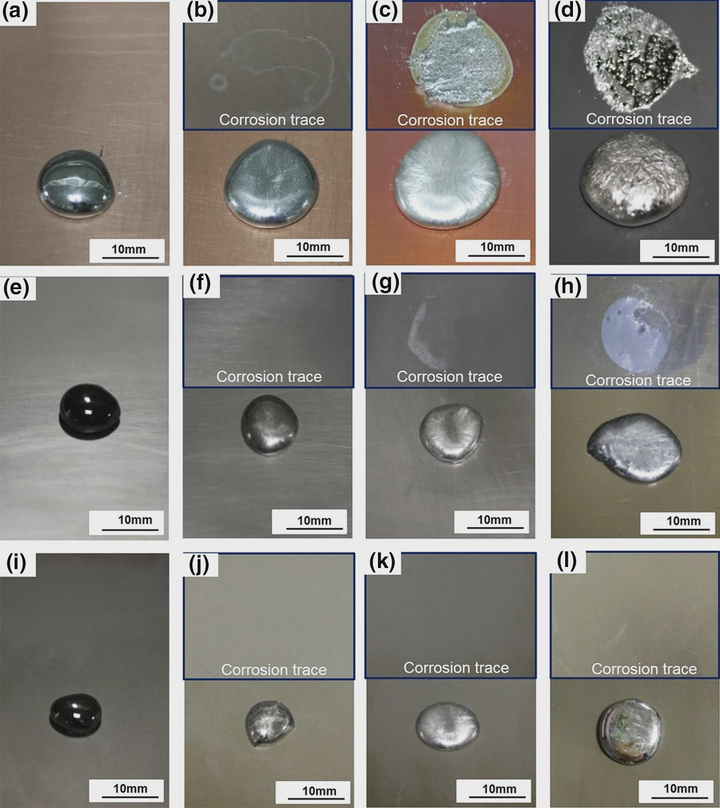Liquid Metal Corrosion Effects on Conventional Metallic Alloys Exposed to Eutectic Gallium–Indium Alloy Under Various Temperature States

Abstract
The effects of liquid metal corrosion on the thermophysical properties of three con- ventional metallic alloys, including T2 copper, 304 stainless steel and anodized 6061 aluminum alloy, in the range of 100–400 °C were comprehensively clarified in this paper. It was experimentally found that the corrosion products on the copper sur- face existed as the intermetallic compound of CuGa2, and that FeGa3 and Cr3Ga4 were formed on the surface of stainless steel. The heat conductivity of copper plate decreased with the increasing corrosion temperature. The heat conductivity of the corroded copper sample sharply decreased at the beginning stage. When the copper plate was exposed in liquid eutectic gallium–indium over 12 h, the trend of the tested heat conductivity changing curve showed a smooth tendency and reached a steady state finally. The heat conductivity of the corroded copper plate was decided by the corrosion speed with an exponential function of v at(0.4 < a < 0.6). Corro- sion phenomena were not found on the surface of the anodized 6061 aluminum alloy according to the experimental results from ambient temperature to 400 °C, which dis- closed their suitability as the structural material. The present findings would serve as an important reference for the use of liquid metal cooling in high-power electronic devices and high-temperature systems